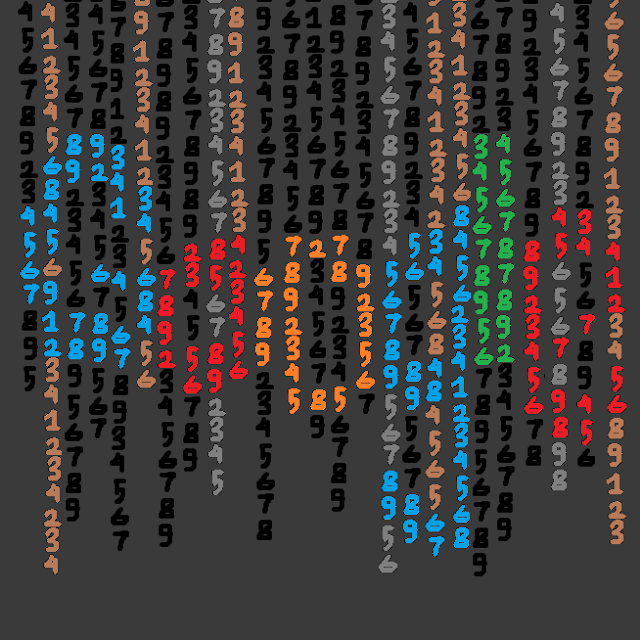How Spotify Uses AI to Revolutionize Music Streaming - Blog No. 55
Introduction: The Soundtrack of the Future
Imagine opening your favorite music app and instantly receiving a playlist that seems to know your mood, your energy level, and even the kind of day you’ve had. No more endless scrolling, no more guesswork — just the perfect song at the perfect moment. That’s not magic; that’s AI at work inside Spotify. In this blog post, we’re diving into the compelling world of artificial intelligence in Spotify — how it works, why it matters, and what the future holds for personalized music experiences.
Related
Chapter 1: The Marriage of Music and Machine Learning
Spotify isn’t just a music app; it’s a data powerhouse. With over 600 million users worldwide (as of 2024), Spotify gathers an astronomical amount of data every day. This includes what songs you play, when you skip, how long you listen, your playlists, and even the volume at which you listen. But raw data is just noise until AI steps in to make sense of it.
At the heart of Spotify’s personalization engine is machine learning — algorithms that learn from your behavior and adapt over time. These models process user data to identify patterns, preferences, and habits, creating a unique listening experience tailored just for you. This isn’t a one-size-fits-all approach; it’s hyper-personalization powered by AI.
Chapter 2: Discover Weekly — Your AI-Curated Mixtape
One of Spotify’s most beloved features is Discover Weekly, a playlist that drops every Monday, filled with music you’ve never heard before — but are highly likely to love. This feature was one of Spotify’s earliest breakthroughs in AI-powered music recommendation.
Discover Weekly uses collaborative filtering and natural language processing (NLP). Collaborative filtering looks at users with similar listening habits and recommends songs you haven’t discovered yet. NLP, on the other hand, scans millions of articles, blogs, and reviews to understand how songs are described and compared. The fusion of these methods results in a playlist that feels eerily accurate.
The impact? Discover Weekly has not only increased user engagement but also boosted the visibility of emerging artists. Some artists have even launched careers after being featured in these algorithmically generated playlists.
Chapter 3: Daily Mix, Release Radar, and More — AI Personalization on Steroids
Discover Weekly is just the tip of the iceberg. Spotify’s Daily Mixes, Release Radar, and On Repeat playlists use similar AI mechanisms to cater to different needs. Daily Mixes blend your favorites with new tracks in the same genre or vibe, while Release Radar highlights new songs from artists you already follow.
Behind the scenes, Spotify uses neural networks and deep learning models to enhance these experiences. By learning your listening behavior in real-time, the system adapts and evolves, much like a digital DJ who knows when to hype the crowd or slow it down.
Spotify also considers context: are you listening on a weekday morning or a Saturday night? Are you at the gym or commuting? The app can analyze device type, location data, and time of day to serve up contextually relevant tracks.
Chapter 4: AI in Music Creation and Curation
Spotify doesn’t just use AI to recommend music — it’s also dabbling in music creation. In 2023, Spotify acquired several AI music startups focused on generative music. This opens up possibilities where AI could collaborate with artists to co-create songs or produce background tracks for podcasts and playlists.
Then there’s the role of AI in editorial curation. While many playlists are still curated by human editors, AI helps surface hidden gems and suggest song placements. This hybrid model ensures a balance between data-driven decisions and human taste-making.
Chapter 5: Spotify Wrapped — AI’s Annual Gift to Users
Every December, Spotify Wrapped becomes a cultural phenomenon. Millions of users share their personalized music year-in-review on social media. But behind the fun graphics and viral moments lies a complex AI engine that combs through your listening data and distills it into a storytelling format.
Wrapped uses data aggregation, trend analysis, and behavioral prediction to highlight your top artists, genres, and even how your tastes evolved throughout the year. It’s not just a marketing stunt — it’s a masterclass in AI-driven engagement.
Chapter 6: Challenges and Ethical Considerations
As with all AI applications, there are ethical concerns. How much data is too much? Are users fully aware of what Spotify collects and how it’s used? There are also concerns about algorithmic bias — if the AI only feeds you what it thinks you like, how do you ever discover something truly new?
Spotify has addressed some of these concerns with transparency reports and user data controls, but as AI becomes more integral, ongoing scrutiny will be necessary. Moreover, there’s the question of artist equity — does AI promote mainstream hits over indie talent?
Chapter 7: The Future — Where is AI in Spotify Headed?
Looking ahead, Spotify’s AI ambitions are vast. With the integration of voice assistants, more immersive AR/VR music experiences, and possibly even emotional recognition, the future of Spotify will likely be one where music feels even more intuitive and responsive.
We may soon see AI DJs that adapt in real-time to a crowd’s mood or AI-generated concert experiences tailored to individual fans. And as Spotify continues to acquire AI startups and expand its R&D, the line between listener and creator may continue to blur.
Related
Conclusion: AI and the Art of Listening
Spotify’s use of AI is a testament to how technology can deepen human experiences rather than replace them. By leveraging machine learning, NLP, and predictive analytics, Spotify has redefined how we find, enjoy, and connect with music.
In the end, it’s not just about algorithms — it’s about emotion. It’s about those goosebumps you get when a song hits just right. And thanks to AI, Spotify is getting better at delivering those moments, one personalized playlist at a time.



Comments
Post a Comment